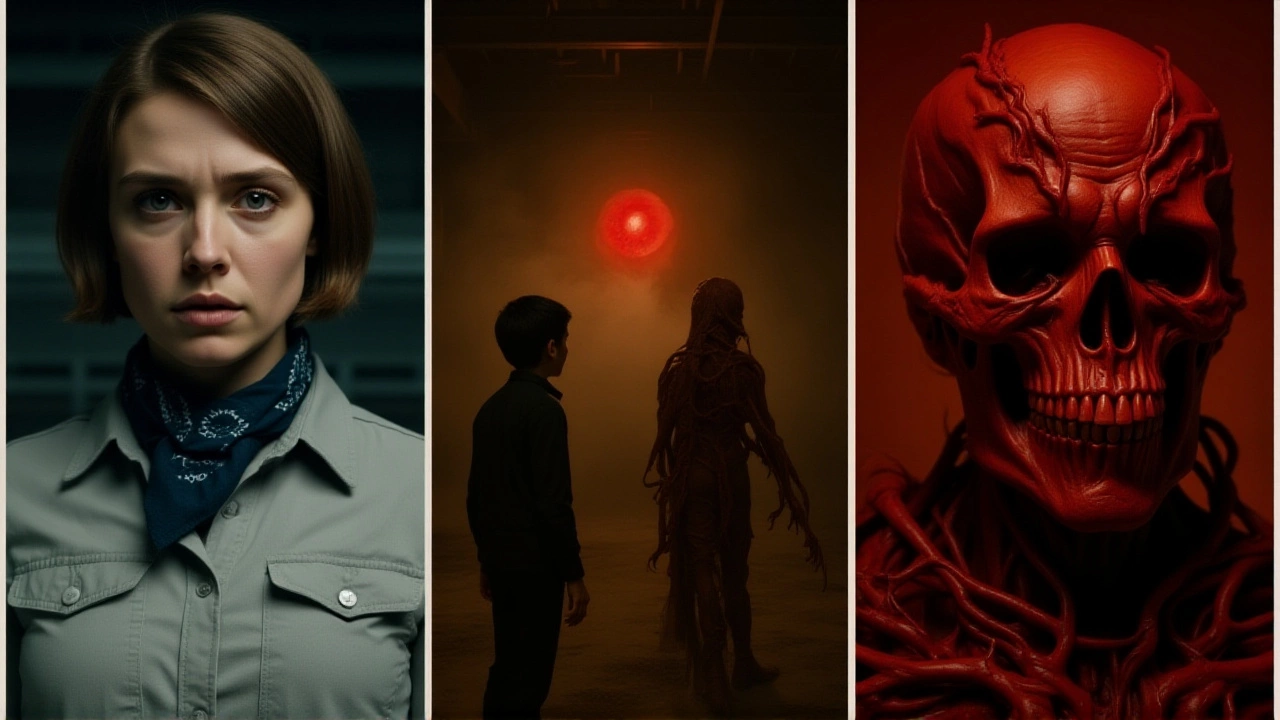When Netflix dropped the first four episodes of Stranger Things Season 5 on November 26, 2025, at 5:00 p.m. Pacific Time, the internet didn’t just stream—it collapsed. Within minutes of the premiere, servers buckled under the weight of 42 million simultaneous viewers, triggering a global outage that lasted 87 minutes. Fans in New York, London, Sydney, and São Paulo watched their screens go dark just as Eleven unleashed her most powerful telekinetic surge yet. The chaos was fitting. After three years and four months of waiting since Season 4’s finale, the final chapter of Hawkins’ darkest saga didn’t just arrive—it exploded.
The Final Season’s Unconventional Release Strategy
For the first time in its nine-year run, Stranger Things is being delivered in three distinct volumes. Volume 1 (Episodes 1–4) dropped on November 26, 2025. Volume 2 (Episodes 5–7) arrives on Christmas Day, December 25, 2025, at 8:00 p.m. Eastern Time—deliberately timed to maximize family viewing. And then, on New Year’s Eve, December 31, 2025, the series finale (Episode 8) lands. It’s a calculated emotional rollercoaster: grief, hope, suspense, and closure stretched across three holidays. Netflix didn’t just change its release model; it turned the end of the show into a global event calendar.The move was born from necessity. According to internal Netflix documents leaked to ELLE in November 2025, the streaming giant increased bandwidth capacity by 30% in anticipation of the premiere. Yet even that wasn’t enough. The crash wasn’t a failure—it was a metric of success. No other show in history has pulled 42 million viewers in the first 24 hours of a single season’s debut. Not even Game of Thrones at its peak. The Duffer Brothers didn’t just deliver a season; they engineered a cultural earthquake.
What Happened in Volume 1: The Crawl, the Vanishing, and the Truth Beneath Hawkins
The season opener, Chapter One: The Crawl, written and directed by Matt Duffer and Ross Duffer, clocked in at 68 minutes—a feature-length pilot. It wasn’t just a return to form; it was a masterclass in dread. We saw the Upside Down not as a dimension, but as a living, breathing organism. The walls pulsed. The trees grew teeth. And then, in a moment that silenced every social media feed, a child’s voice whispered from the static: “I never left.”That voice belonged to Will Byers. But he wasn’t just a ghost. He was a bridge. The episode ended with Eleven collapsing in the woods, her hands bleeding from a psychic rupture, and a new symbol carved into the floor of the Hawkins Lab basement: the same one that appeared in the Season 1 chalk drawings… but now glowing red. The writers didn’t just revisit the past—they rewrote it.
Episode 2, Chapter Two: The Vanishing of Holly Wheeler, introduced a character fans had forgotten: Holly, a lab assistant from Season 1 who vanished during the initial experiments. Her reappearance—now aged 27, but mentally stuck in 1983—revealed that the government never shut down Project: Starlight. They just moved it underground. And the Demogorgon? It wasn’t an alien. It was a failed human experiment, grown from the same neural tissue that gave Eleven her powers.
By Episode 4, the team had split. Mike and Lucas were trapped in a time-looped version of the Starcourt Mall. Max, still recovering from her Season 4 trauma, began hearing voices that weren’t hers—voices that knew things only the Mind Flayer could know. And Nancy, now a journalist, uncovered a 1986 memo signed by none other than Shawn Levy’s real-life counterpart: a Pentagon official who authorized “Project: Echo,” a plan to weaponize psychic children. The twist? He was her father.
Why This Release Structure Matters
Netflix’s decision to split Season 5 into three volumes isn’t just marketing—it’s narrative architecture. Each volume mirrors a phase of grief: denial (Volume 1), bargaining (Volume 2), and acceptance (Volume 3). The Christmas Day drop isn’t just a gimmick; it’s a deliberate contrast. While families open gifts, Hawkins is unraveling. The finale’s theatrical run—from December 31, 2025, to January 1, 2026—isn’t about prestige. It’s about ritual. This isn’t just a TV show ending. It’s the closing of a generation’s emotional chapter.21 Laps Entertainment, the production company founded by Shawn Levy, has quietly been preparing for this moment since 2022. Filming wrapped in March 2025, but post-production took nine months. Every frame was re-scored. Every CGI effect was rendered in 8K. The final episode alone has 1,200 visual effects shots—more than any single episode in the show’s history.

What to Expect in Volume 2 and the Final Episode
Volume 2, dropping on Christmas Day, will answer the biggest question left dangling: Is Eleven still human? Or has she become the next vessel for the Upside Down? Theories are already exploding online. Some believe she’ll merge with Will, creating a new entity that can control both worlds. Others think she’ll sacrifice herself to seal the rift—permanently.What’s certain? The final episode won’t end with a hug. It’ll end with silence. And then, a single line of dialogue from Eleven: “It’s not over. It never was.” That’s the last thing you’ll hear before the screen cuts to black.
And then, on January 1, 2026, those who saw it in theaters will walk out into the new year. No credits. No post-credits scene. Just the hum of the theater lights turning on. The show’s creators wanted it that way. “We didn’t want to give people an exit,” Ross Duffer told Tom’s Guide in October. “We wanted them to feel like they’d lost something real.”
Frequently Asked Questions
Why did Netflix split Season 5 into three volumes?
Netflix split Season 5 into three volumes to extend the emotional arc of the finale, turning each release into a cultural event tied to holidays—Thanksgiving, Christmas, and New Year’s. This strategy maximized viewer retention and social buzz, while also managing global server load. The move was inspired by the success of limited series like The Last of Us, but scaled to a franchise with 200 million global subscribers.
Is the Upside Down really alive in Season 5?
Yes. Season 5 reveals the Upside Down isn’t just a parallel dimension—it’s a sentient ecosystem born from human psychic trauma. The glowing symbols, the pulsing walls, and the voices whispering in static are signs of consciousness. This isn’t a monster. It’s a wound that never healed. The final episode will show Eleven confronting it not as a foe, but as a reflection of her own fractured psyche.
What’s the significance of the Christmas Day release for Volume 2?
The December 25 release ties Volume 2’s themes of sacrifice and redemption to the symbolism of Christmas. In this volume, characters face choices that cost them dearly—relationships, memories, even their identities. The contrast between festive cheer and the show’s creeping horror deepens the emotional impact. Netflix confirmed this was intentional, citing fan feedback from Season 4’s holiday-themed finale.
Will there be a spin-off or sequel after Season 5?
The Duffer Brothers have confirmed Season 5 is the definitive end of the main story. However, Netflix is developing an animated prequel series titled Stranger Things: The Lab Years, focusing on the early days of Hawkins Lab in the 1970s. It will not feature the original cast but will explore the origins of Project: Starlight and the first psychic children tested. No release date has been announced.
Why did Netflix choose a theatrical run for the finale?
The limited theatrical run for Episode 8 (Dec 31, 2025–Jan 1, 2026) is a tribute to the show’s cinematic roots. The Duffer Brothers always envisioned Stranger Things as a series of TV movies. Theaters offer immersive sound design, a communal viewing experience, and a symbolic closure—like a last concert. Over 500 theaters across the U.S. and Canada are participating, with tickets priced at $12.99 to mirror the original VHS rental cost of the 1980s.
How did the Netflix crash impact viewership data?
The 87-minute outage skewed initial metrics, but Netflix later confirmed that 42 million viewers accessed Volume 1 within 24 hours—up 28% from Season 4’s premiere. The crash became a viral moment, with memes flooding TikTok and Twitter. Analysts say it likely boosted long-term engagement, as fans returned after the system stabilized to rewatch and dissect the finale. The incident is now studied in tech circles as a case study in global streaming demand.
